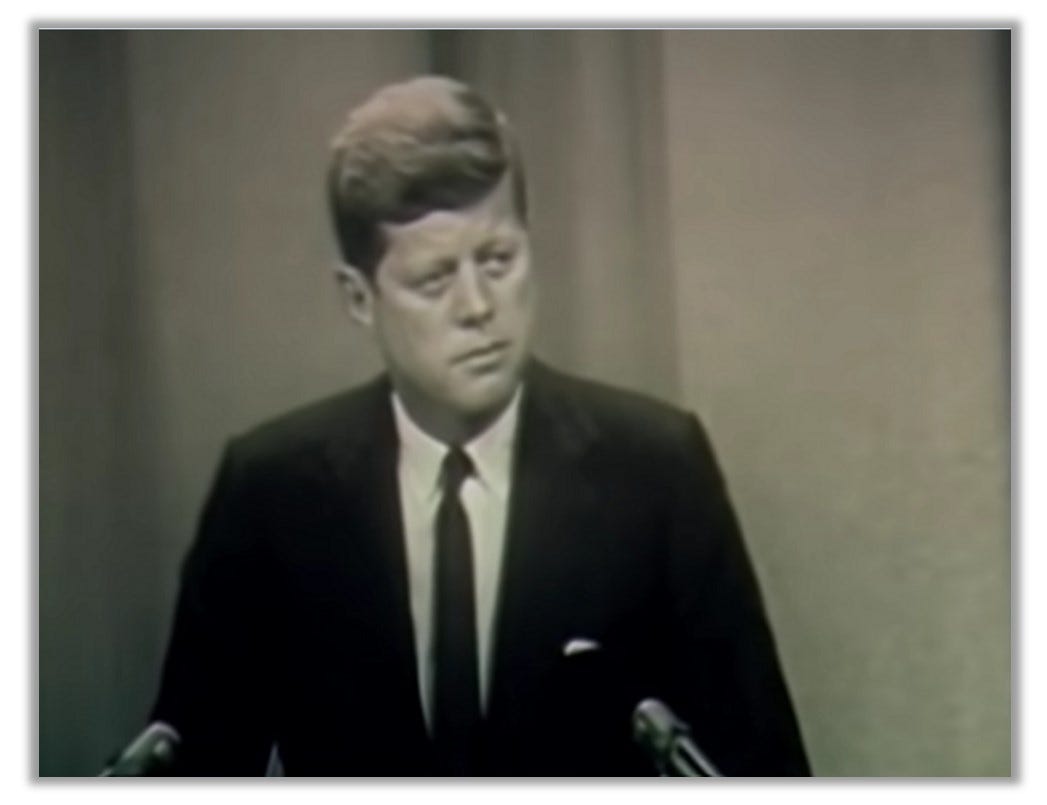TDIH: First Live Televised POTUS Press Conference
The press thought it “the goofiest idea since the hula hoop.”
On this day in 1961, John F. Kennedy becomes the first United States President to give a live, televised press conference. Modern Americans are used to seeing Presidents in such situations, but the concept was entirely new back then.
“[It’s] the most haphazard method ever devised to obtain the views of a President of the United States,” journalist Bob Considine scoffed before the press conference. He was joined by New York Times columnist James Reston who thought it “the goofiest idea since the hula hoop.”
What if a presidential slip of the tongue caused an international incident?
A writer in Ohio piled on with a different worry: What would happen now that “the whole nation is ‘scooping’ the reporters”? Others objected because they thought the conferences would turn into spectacles, disrespectful to the office of the President.
“If live TV press conferences become a regular feature,” opinion writer Samuel Lubell mused, “my judgment is that they will tend to make the Presidency somewhat more of an actor’s office than it has been.”
People were used to hearing from their Presidents, of course—just not in this fashion.
Woodrow Wilson was the first to hold a press conference in the early 1900s, as did Calvin Coolidge, FDR, and others. Yet these early versions often involved just the President and press, with answers only partly on the record. Sometimes reporters submitted questions in writing, and the President would have the opportunity to prepare an answer—or to ignore a question.
On the flip side, FDR hosted the press in the Oval Office for cozy, off-the-record conversations, while Dwight Eisenhower allowed his press conferences to be recorded and broadcast—but only after edits were made to the recording.
Kennedy was ready for something bigger and better. He’d already participated in the first televised presidential debate. Now, just five days after his inauguration, he was ready to use the power of television in a new way.
“When we don’t have to go through you b*stards, we can really get our story to the American people,” he reportedly told Ben Bradlee of Newsweek.
Kennedy’s first live press conference was held in the State Department auditorium, with a television audience of roughly 65 million people. He delivered a prepared statement, then took questions. After that, he held press conferences about once every 16 days. Newspapers reported that the telegenic President handled questions with confidence and ease.
There was no looking back, as you know. Kennedy ushered in the start of the modern era when it came to presidential press conferences.
Do you think the changes have been mostly positive or mostly negative?
Sources can always be found on my website, here.





Your posts are always thought provoking, Tara. Well hindsight is always 20/20. From this point in time it seems like it was a bad idea. It’s a way for presidents and their representatives to put on a show. It’s a tool to control the narrative. When a corrupt press is part of the equation the people don’t get the truth. It becomes a circus which is sometimes amusing, but mostly frustrating for thinking intelligent folks. On the other hand it does put the hypocrisy and deceit on full display. The question is do the majority see through it or are they easily fooled by every distraction. Praying fervently for our troubled Republic.
Thank you Tara for the inside baseball from the old line press regarding JFKs first televised press conference. Interesting.
I think that live and frank press conferences with genuine questions and answers is a great thing to let the American people see and hear from their President.
However, they have varied greatly in that regard. From Ronald Reagans easy and confident style to our current one, there's a marked difference in style, and content. Or, there's no press conference at all, again as we now have because live, unscripted interaction would provide a look at what we actually have.